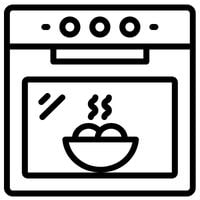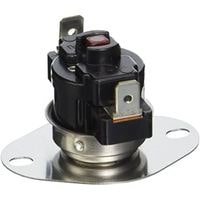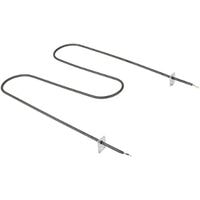Frigidaire Oven Won’t Turn On. If your oven won’t turn on, you might have a power issue. To verify whether the electrical outlet is providing enough power, test it using a multimeter and see if there is sufficient voltage to operate the oven.
The thermal fuse will trip if you are getting too much power for your motor. If your motor has overheated, do not attempt to touch the wires or connectors.
Disconnect from the power source and contact an appliance repair specialist immediately because touching the wires could cause serious damage.
Frigidaire Oven Won’t Turn On
When an oven doesn’t turn on, the problem may be as simple as a tripped circuit breaker. Test the oven’s power supply by using a multimeter to measure the current draw at the receptacle; look for a rating of 15 amps or higher.
A faulty thermostat will trip the thermal fuse if an oven becomes too hot. When this happens, the oven will not turn on.
Safety Valve Problem
The oven safety valve is part of your gas oven’s starting assembly. The igniter works with the safety valve to provide gas to the burner.
If either the igniter or safety valve fails, you can often correct the problem by simply replacing that component in most cases.
However, if all components are working properly, use a multimeter to test the safety valve for continuity to see whether or not it needs to be replaced.
Faulty Thermal Fuse
If the thermal fuse trips, it means that something inside of your oven is overheating. When this happens, you will not be able to use your oven until you replace the thermal fuse.
The only way to tell if there’s an issue with your thermal fuse would be to check for continuity, and if there isn’t any, then you might want to get a new one because the fuse just blew.
You cannot reset a blown thermal fuse. You’ll need a replacement part for your appliance.
Issue With Relay Board
Relay boards are sometimes installed in ovens. The relay board is a circuit used to help control electrical circuits by taking action in accordance with an input signal.
A relay can be summarized as being an electrically operated switch controlled by an electromagnet that is activated by a control circuit. If one or more of the relays on the relay board fails, the oven won’t heat.
Before replacing the relay board, though, first, check all of the heating components in the oven. If none of the heating components are defective, then it could be that the relay board itself needs replaced (if it’s faulty).
Defective Broil Element
When the broil element is heating it should glow bright red and leave a red coating where ever it touches.
If you see no change in color and nothing is being left behind, chances are good that there’s either a problem with the broil element or that it may have burned out.
Looking for burnt spots or holes in the material will help you determine if there’s an issue with this part and perhaps that it needs to be replaced.
Testing for continuity can help you to know if this is a dead-end or not (unlike trying to take a closer look because coming at this from different angles can give different results).
Baking Element Error
When the baked element is glowing red, this indicates that the element has begun heating up. Whereas if the baking element does not glow red, it could indicate a problem or a broken part.
You’ll need to inspect the baking element for any flaws like holes or blisters and check for continuity using a multimeter. Once these checks have been done and the baking element doesn’t seem to be working, then you’ll need to change it immediately/replace it.
Controlled Temperature Thermostat
The oven thermostat monitors the temperature inside the stove and cycles on or off to keep it within the range you’ve set. However, if the thermostat fails, your oven won’t turn on.
Before swapping out your thermostat, be sure to check more commonly defective components like the igniter and stove elements. If those components are not at fault, consider repairing or replacing your oven thermostat.
The temperature control unit is difficult to test and verify since there are so many variations of this component used in the industry. If you suspect that yours is faulty and needs to be replaced, do so as soon as possible.
Problems With Incoming Power
As most of us know, ovens require electricity to operate. If a burner isn’t working right, make sure that you check the power circuit.
A multimeter can be used to test the incoming power at the wall socket in order to help determine if the electrical outlet is delivering a sufficient voltage that is required by your gas oven or electric oven.
Error In Igniter
The ignition for the oven is a common reason for the oven not working. The ignition will ignite when it comes in contact with the burner, which results in transferring heat from that part of the gas range over to your food.
There are a couple of tests you can do to determine what is wrong if your gas range stops working. First, check to see if your burner has sparked, as you could be looking at either a broken igniter or a faulty flame sensor.
If neither of these is true and your burners aren’t sparking inside, then it may be due to burners not being lit by the valve that links them to the pilots underneath them as well as shutting off after 23 seconds.
Related Guides
